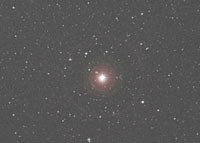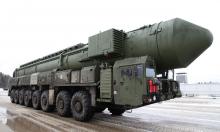Killer stars from deep black space threaten Earth
 Outer space poses a threat to the Solar System. This time it was declared not by homegrown advocates of the near doomsday, but solid astrophysicists. Earlier this year the 217th Meeting of the American Astronomical Society was held in Seattle where the most dangerous objects for our planet were named.
Outer space poses a threat to the Solar System. This time it was declared not by homegrown advocates of the near doomsday, but solid astrophysicists. Earlier this year the 217th Meeting of the American Astronomical Society was held in Seattle where the most dangerous objects for our planet were named.
With the help of The Sloan Digital Sky Survey, researchers have compiled a list of stars that may represent a potential threat to Earth, for example, by approaching the Sun and impacting objects around it.
It turned out that of the 40,000 red dwarfs (objects of this class are most common in the universe) nearest to us, 18 are quite capable of "attacking" the solar system.
One of the most dangerous objects is the Oort cloud, a giant bubble containing billions of ice and rock boulders. Researchers believe that these objects are constantly circulating through the solar system as comets, leaving deep craters when coming into contact with planets. They fell on Earth as well. Although the Oort cloud is located at a distance of 50,000 to 100,000 astronomical units from the Sun, under the influence of stellar gravity, planets in our solar system, including Earth, may undergo an active comet bombardment. At least, John Bochanski from the University of Pennsylvania believes this to be a possibility.
Recently, astrophysicists John Mathis and Daniel Whitmire) from the University of Louisiana came to the conclusion that within the Oort cloud there must be an object whose mass is two times heavier than that of Jupiter's - perhaps a gas giant or a cold star. The distance to it is approximately 30,000 astronomical units. An object dubbed Tyche, the goddess of fortune, is a sister of the sinister Nemesis star. Incidentally, according to some predictions, next year the mysterious "star Nemesis" (also called Nibiru and Planet X) will destroy the Earth.
Scientists are concerned with asteroids that have been recently frequenting Earth. Only in the past two years, a few pieces of these heavenly bodies, albeit quite small in size, fell on Earth. With the help of a telescope WISE astrophysicists hope to identify nearly 100,000 asteroids representing a potential threat. Even more serious threat comes from the Kuiper belt. This is the name of the giant ring beyond the orbit of Pluto which consists of rocks and asteroids, located at a much closer distance to the Sun than the Oort cloud - from 30 to 50 astronomical units.
There are other dangers as well. For example, star Gliese 710 of the constellation of the Serpent. This object, whose weight is approximately 0.6 of the solar mass, is approaching the Sun at a rate of several dozens of kilometers per second and is now located at a distance of 63 light years from us. This was stated by an employee of the Pulkovo Observatory RAS, head of the kinematics and galactic structure of positional astronomy, Vadim Bobylev. He used the data on the motion of 35,000 stars closest to us, received by a European research probe Hipparcos. He reconstructed the orbits of these stars, and calculated that the probability of convergence of Gliese 710 with our system is 86 percent. Theoretically it may even get into the orbit of Pluto. However, this would happen no earlier than in 1.45 million years.
The possibility that Gliese 710 would slam into the Sun is almost zero, says Bobylev. "But at the time the convergence of the gravitational field of passing stars can affect the objects in the solar system," he said. "First of all, the Oort cloud will be affected. There is also a fairly low probability that the star will pass so close to the Sun, that it will have an impact on the Kuiper belt."
According to the history of astronomical observations, during the lifetime of the solar system the "outside" stellar objects have repeatedly approached it. Over the past two million years, our system was approached by nine stars. Most likely, in tens of millions of years the number of such encounters has been much greater. No one knows whether they caused the destruction of life on some planets. After all, there is a hypothesis that global cataclysms that resulted in the extinction of all things live have repeatedly happened on Earth. However, these cases of extinction and the time of convergence of stars with the solar system do not correlate with each other. In addition, it has long been known that the extinctions on our planet were not instantaneous, but lasted thousands of years.
In addition, some researchers express serious doubts about all these apocalyptic speculation. First, the calculation error is too great, and secondly, the calculations cover a very large time span - nearly a billion years. In such a long time, according to the probability theory, only one of 18 "dangerous" stars will approach the Sun at a critical distance.
Irina Shlionskaya
Pravda.Ru
Subscribe to Pravda.Ru Telegram channel, Facebook, RSS!





